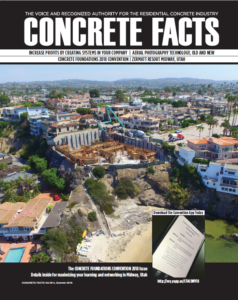 Are you still using wood reveals to create decorative details in your tilt-up panels? Nox-Crete's Tilt-Up Market Segment Manager Tom Bozzano has a lot to say on why you should consider switching to PVC reveals such as Clean Line Reveal. Clean Line Reveal won the 2018 Most Innovative Products at the World of Concrete. PVC reveals are durable, easy to install, easy to remove and produce a clean release and uniform finish. See Tom's article, "The Advantages of PVC Reveals in Decorative Tilt-Up" in Tilt-Up Today magazine!
Are you still using wood reveals to create decorative details in your tilt-up panels? Nox-Crete's Tilt-Up Market Segment Manager Tom Bozzano has a lot to say on why you should consider switching to PVC reveals such as Clean Line Reveal. Clean Line Reveal won the 2018 Most Innovative Products at the World of Concrete. PVC reveals are durable, easy to install, easy to remove and produce a clean release and uniform finish. See Tom's article, "The Advantages of PVC Reveals in Decorative Tilt-Up" in Tilt-Up Today magazine!
Read the full article here.
Read up on the benefits of PVC reveals and then reach out to Tom with any questions. You can reach Tom at TBozzano@nox-crete.com or 402-598-8673.
 chemical solutions to concrete problems
chemical solutions to concrete problems


